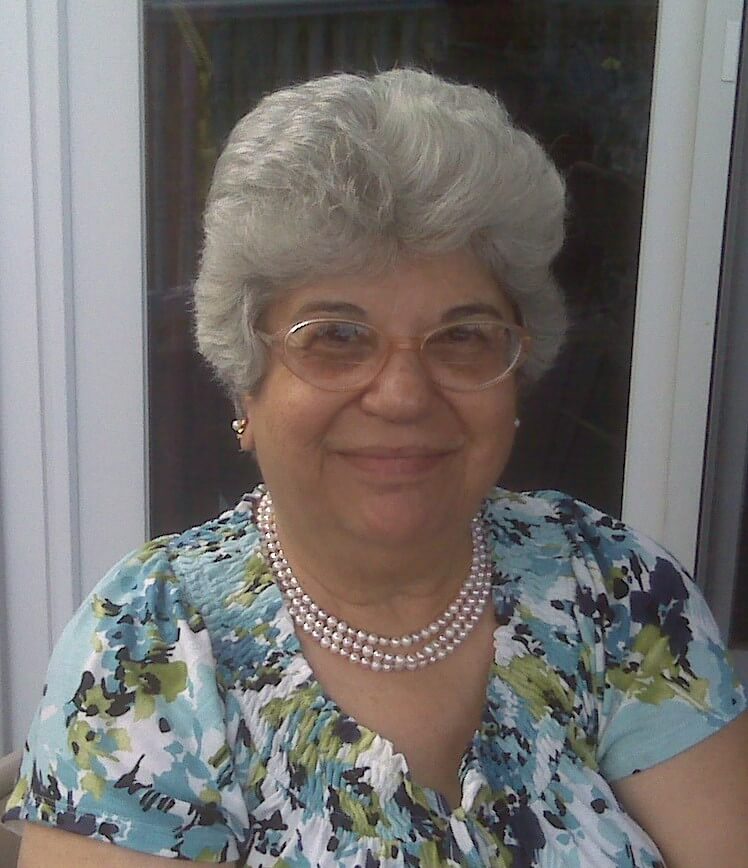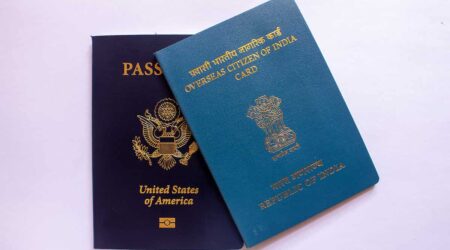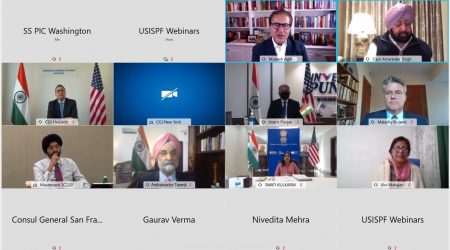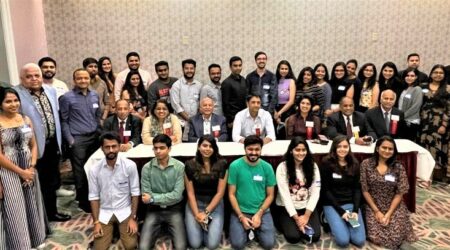By Nawaz Merchant
My mother Silloo Parakh was head teacher of the Primary at Avabai Petit School, Mumbai. At the end of each school day, she supervised hundreds of children boarding school buses to go home. Her garden print chiffon saree a-flutter around her, she made a gracious sight standing upright in the organized chaos of the parking lot.
Students streamed toward their buses from various school buildings: Mrs. Irani’s class all sweaty from the gym, Mrs. Seldon’s cooking class proudly bearing goodies they’d prepared. From the main Elementary school building came Mrs. Sethi’s tiny first graders hurrying along in twos behind confident second and third graders. From the main hall with its marble Grecian statue came Fourth graders who ran across the grass, pigtails flying, book bags bouncing on their thin shoulders with thuds.
By the second or third week, Mum would have learned each child’s name, which class they belonged to and which bus they’d be on. She already knew most of the second, third and fourth forms. Only the little stumbling First graders were brand new, and the new girls who had joined that June. Petit High school students wore bright teal pinafores over white shirts, belted in place with a teal sash. New students usually didn’t have uniforms that early in the year, so they were easy to spot, walk up to, smile at and say, “I’m Mrs. Parakh. What grade are you in? Ah? Second? Okay, that bus there, number 17? You see it? That’s yours. Go on now.”
And they’d scurry away as though the bus might leave without them. It never did.
Only five days into the school year, she was waving the buses off one afternoon, perhaps already walking away as the buses queued up to leave, when the screaming began. Hearing it, she began to run alongside the buses, searching, peering, to see where the problem lay. Something was very wrong: urgent shrieks and calls, “Mrs. Parakh!” rose in volume as she approached. The bus slowed. She grabbed the bar and clambered up in her saree. She probably couldn’t see what the matter was, because girls crowded the aisles hollering and pleading in what likely made no sense at all.
“Sit! Everyone! Sit!” she yelled, and spotted Nina immediately. It would have been hard not too, because blood is so very red, and it was pouring from Nina’s arm, soaking her shirt and uniform.
Nina was sitting at a window. Mum would have seen instantly that she could not move, because a glass pane had come loose and was cutting into her arm. Nina’s elbow was resting on the window, so the pane dug into her flesh at two places, a lucky thing, as it happened, for had it laid its razor’s edge on one spot, it would likely have sliced right through that tender limb.
“Nina, I’m here,” Mum said, and, if the dozen girls who repeated the story are to be believed, she lifted the sharp edge off Nina’s arm with her bare hand, bundled her saree around Nina’s arm and clamped down on the wound.
Mum later said, “I squeezed that arm tight to stem the blood.”
She picked up Nina and carried her off the bus. Still in her high heels and flowery saree, she went toward the gate.
“Open the gate!” She called to the gaping chowkidar, and hurried through.
There, cars waited in a line to pick up students. She stopped the first one, a shiny black Ambassador.
“Open the door,” she told the chowkidar, probably without even greeting the man driving. She got in with Nina on her lap, saying. “We need a hospital.”
“Mrs. Parakh? It’s me, Dr. Trivedi,” said the shocked man at the wheel. “I own Diamond Clinic. Let’s go there!”
On the way he explained that he and other staff would attend the child. He’d opened his clinic two years before and come to pick up his own daughter who was now in the front seat. Mum gulped in a breath and breathed out a prayer of thanks.
Nina did not bleed out that day. Nor did she lose her arm. Summoned by the Principal, when her parents rushed into the clinic, she was sewn up, bandaged and eating ice-cream that the Doctor had had ordered from the store below his clinic.
Nina’s parents had taken her home when Mum finally left the clinic that night. Her saree was drenched, blood clotting on the chiffon to cling to her. Although she’d washed her face and hands, when at last she stepped through our door that night, she looked like she’d been in a riot.
But for Mum’s quick response, considerable presence of mind and will, and the amazing coincidence that a physician who ran a clinic was close by that day, little Nina’s parents would have lost her.
Over the years we met many of Mum’s students. Even decades later, when the interleaving years had drawn a hundred lines around Mum’s smile, they’d recognize her and rush over to speak with her. I was with mum when we met Nina again. As we paused in front of a store somewhere on Hill Road, Mum didn’t recognize her.
Nina came up dragging two youngsters by the hand to introduce them to “My teacher, Mrs. Parakh! It’s Mrs. Parakh!” saying her name with heart-felt measure, like a talisman.
I understood then what she felt; nothing could go wrong when Mrs. Parakh was around. The world was safe. Little girls might bear a scar or two, but twenty years later, they’d simply peel back the saree from their arm to show their children and tell about their big adventure.

Writing as Nev March, Nawaz Merchant is the author of award-winning Murder in Old Bombay, a historical novel based on a real mystery from 1891. Her novel is nominated for an Edgar award, as well as Barry and Hammett awards for Excellence in Crime Fiction.
(Photos Provided)












